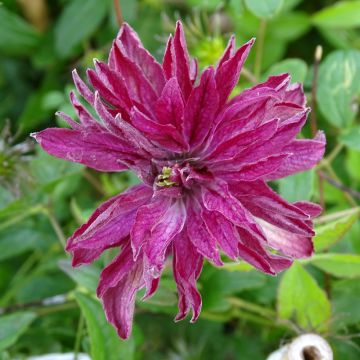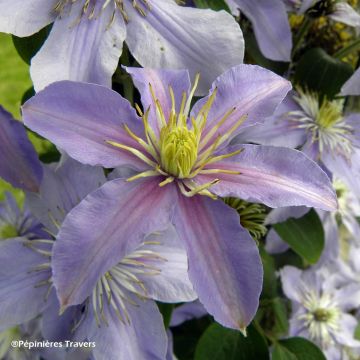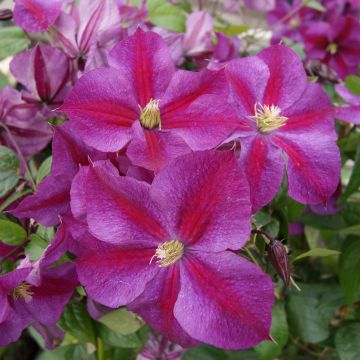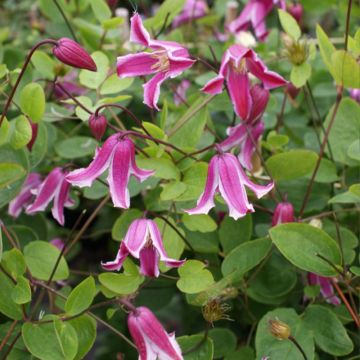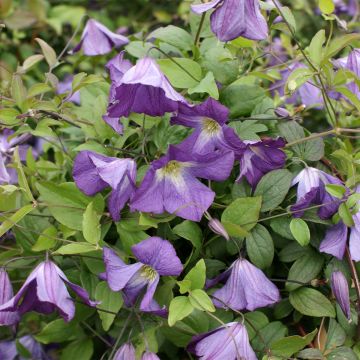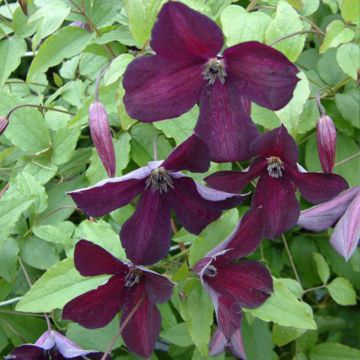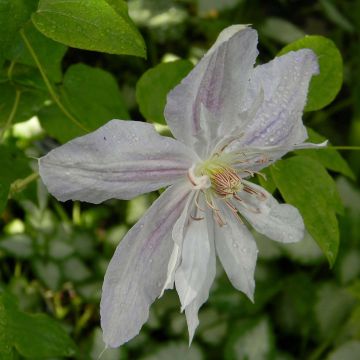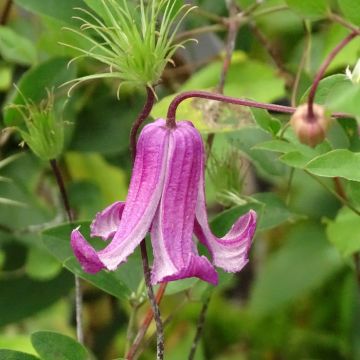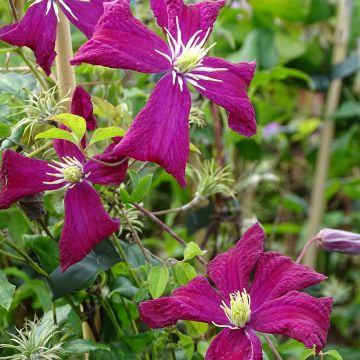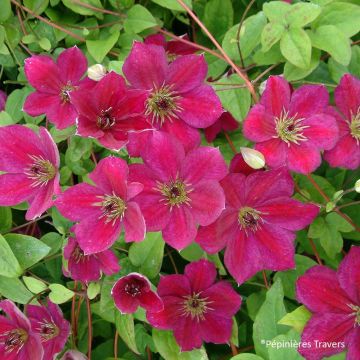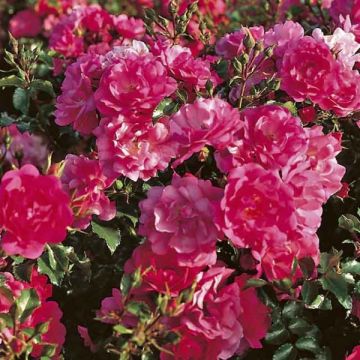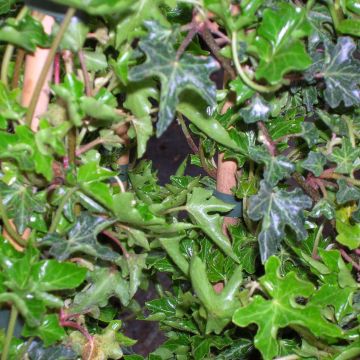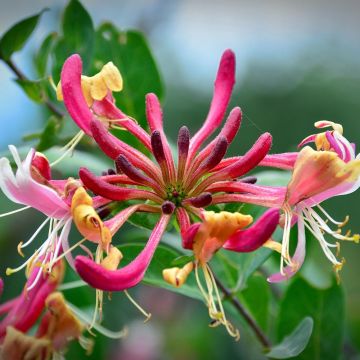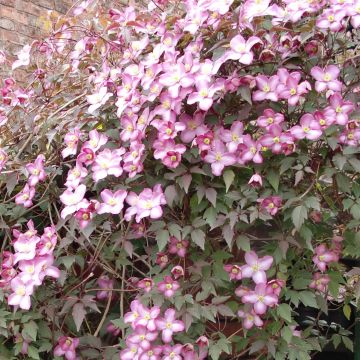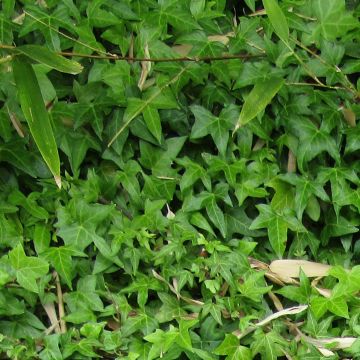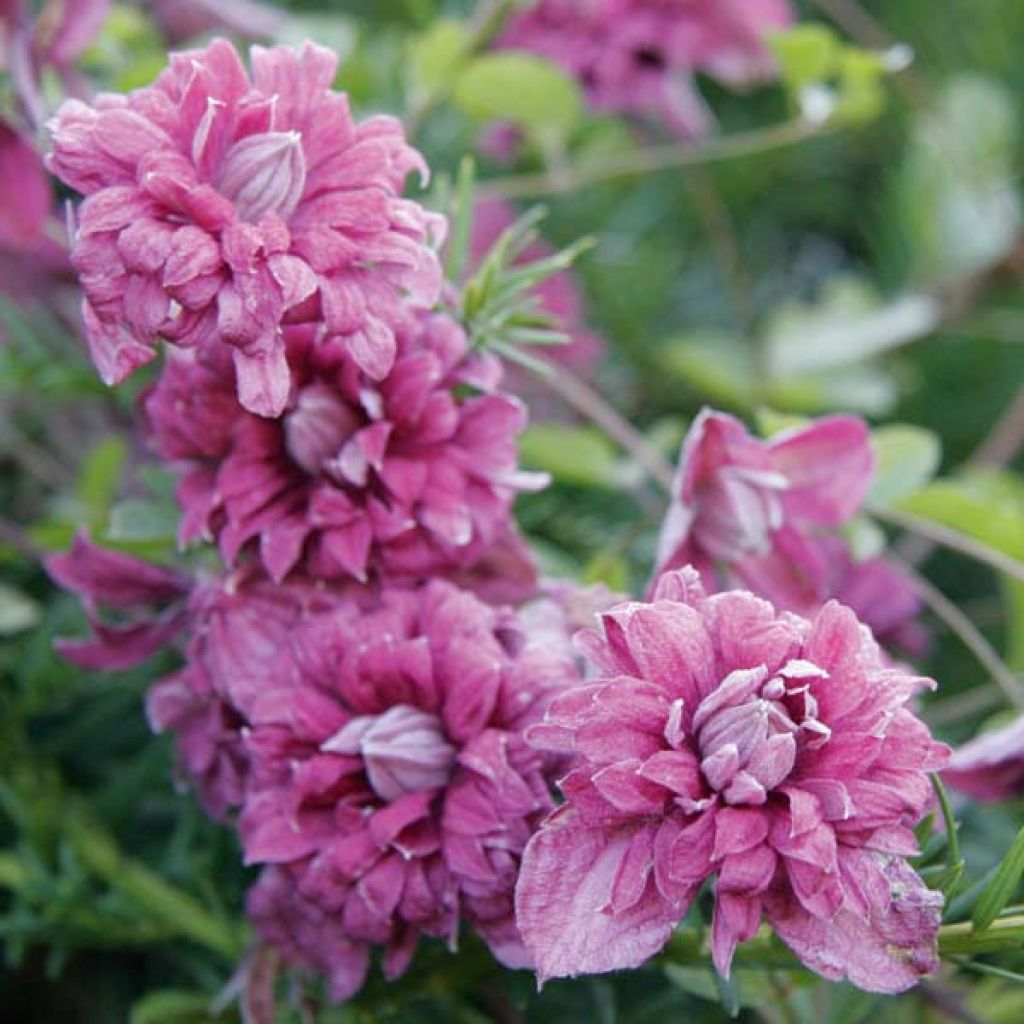

Clematis viticella 'Purpurea Plena Elegans'
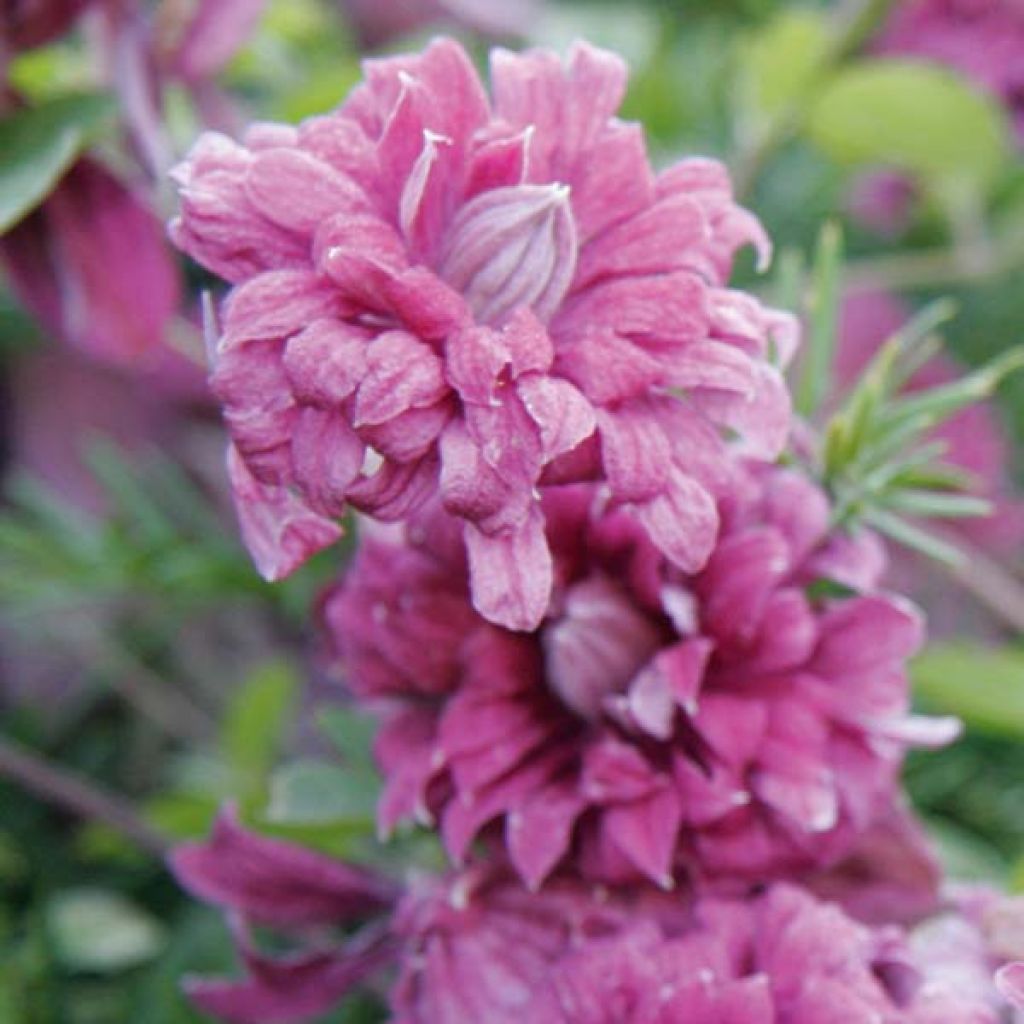

Clematis viticella 'Purpurea Plena Elegans'
Clematis viticella 'Purpurea Plena Elegans'
Clematis viticella Purpurea Plena Elegans
Italian Leather Flower, Purple Clematis, Virgin's Bower
This item cannot be shipped to the selected country
Delivery charge from €5.90
Delivery charge from €5.90
More information
Schedule delivery date,
and select date in basket
This plant carries a 6 months recovery warranty
More information
We guarantee the quality of our plants for a full growing cycle, and will replace at our expense any plant that fails to recover under normal climatic and planting conditions.
From €5.90 for pickup delivery and €6.90 for home delivery
Express home delivery from €8.90.
From €5.90 for pickup delivery and €6.90 for home delivery
Express home delivery from €8.90.

Does this plant fit my garden?
Set up your Plantfit profile →
Description
The Clematis viticella 'Purpurea Plena Elegans' is a descendant of the genuinely original Italian clematis, with its flowers' unique shape and colour. Not very large, they are double and display an unusual colour that hesitates between red wine, bordeaux, and violet, sometimes considered dull. A slight lack of brightness that is more than compensated by the vigour and generosity of this plant, which flowers abundantly from early summer and for several weeks. Clematis from C.viticella are robust climbers, not very demanding in terms of soil, less capricious than large-flowered clematis, and not very susceptible to wilting disease.
The genus Clematis belongs to the Ranunculaceae family. 'Purpurea Plena Elegans' is a very old French variety (F. Morel 1899), derived from the Clematis viticella native to southern Europe. It belongs to clematis that bloom in summer on new growth. It is a semi-woody and vigorous climbing perennial plant that quickly reaches 3 to 4 metres (10 to 13 feet), with a spread of 1.50 square metres, sometimes more, depending on the growing conditions.
This clematis bears double pompom-shaped flowers, generally 4 to 6 cm (2in) in diameter, sometimes larger, from June to September-October, mainly in the upper half of the plant. In very dry summers, flowering will quickly decline. The flowers, devoid of stamens, are solitary and erect or pendulous. Each flower lasts about three weeks and fades beautifully. They open on stems that reach a minimum length. They have numerous slightly curled tepals, ranging from dark red to grey-white on the reverse side. The outer tepals are sometimes green, and the centre of the flower is pinker. Decorative feathery fruits, grey with a silvery tinge, follow the flowering. The leaves are divided into small ovate to lanceolate leaflets, olive green with irregularly serrated edges. This clematis clings to its support or the host plant through modified petioles that become tendrils.
Plant your clematis alongside your climbing roses or vines to extend the flowering of your walls and pergolas until the end of summer. It is a diverse genus, with varieties available in all colours, shapes, and sizes. Take advantage of the ease of growing varieties derived from C.viticella to give your garden a romantic and bohemian touch. "Purpurea Plena Elegans" is a plant that can be easily cultivated in ordinary soil and a sunny, but not scorching, exposure. One can allow it to climb a shrub with a different flowering time, such as lilac, mock orange, or Japanese quince. It looks stunning when combined with white roses.
Report an error about the product description
Clematis viticella 'Purpurea Plena Elegans' in pictures
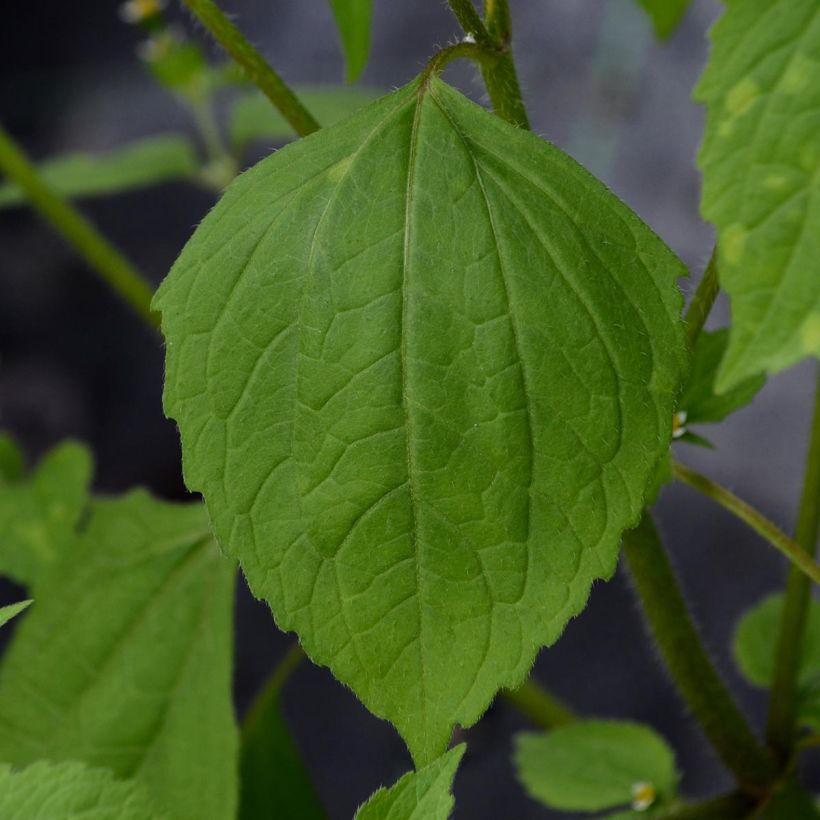

Plant habit
Flowering
Foliage
Botanical data
Clematis
viticella
Purpurea Plena Elegans
Ranunculaceae
Italian Leather Flower, Purple Clematis, Virgin's Bower
Cultivar or hybrid
Other Clematis Viticella
Planting and care
Plant the 'Purpurea Plena Elegans' climbing clematis preferably in a sunny (not scorching) location, in fairly fertile, well-drained soil, while shading the roots and base of the stem (with a flat tile, for example). Clematis plants from the C.viticella species are robust, not demanding in terms of soil, less temperamental than large-flowered clematis, and susceptible to wilt disease.
Plant your young plant by covering the root ball with 3 cm (1in) of soil in soil that has been worked to a depth of 20 cm (8in), enriched with good compost. Water regularly during the first few weeks, but be careful of stagnant water, as it can cause collar rot. Cover the base of the climbing clematis with a small mound of soil to reduce the risk of wilting while encouraging vigorous shoots to emerge from the base. After planting, prune the stems of deciduous climbing clematis to about 30 cm (12in) above a nice pair of buds. Mulch in February with garden compost or well-rotted manure, avoiding direct contact with the stems. Train the stems without tightening until the plant can grip its support. Clematis also enjoy growing freely on neighbouring plants.
This variety blooms on new shoots in summer, so prune it in March to about 25 cm (10in) above the ground (slightly less for older plants), making clean cuts with secateurs above two large buds. A slightly less severe pruning will allow this climber to reach larger dimensions, but it will predominantly flower in the upper part of the vegetation. Voles and grey worms can attack clematis and devour the stems. Aphids and greenhouse whiteflies are also potential pests.
Planting period
Intended location
Care
-
, onOrder confirmed
Reply from on Promesse de fleurs
Foolproof climbers
Haven't found what you were looking for?
Hardiness is the lowest winter temperature a plant can endure without suffering serious damage or even dying. However, hardiness is affected by location (a sheltered area, such as a patio), protection (winter cover) and soil type (hardiness is improved by well-drained soil).

Photo Sharing Terms & Conditions
In order to encourage gardeners to interact and share their experiences, Promesse de fleurs offers various media enabling content to be uploaded onto its Site - in particular via the ‘Photo sharing’ module.
The User agrees to refrain from:
- Posting any content that is illegal, prejudicial, insulting, racist, inciteful to hatred, revisionist, contrary to public decency, that infringes on privacy or on the privacy rights of third parties, in particular the publicity rights of persons and goods, intellectual property rights, or the right to privacy.
- Submitting content on behalf of a third party;
- Impersonate the identity of a third party and/or publish any personal information about a third party;
In general, the User undertakes to refrain from any unethical behaviour.
All Content (in particular text, comments, files, images, photos, videos, creative works, etc.), which may be subject to property or intellectual property rights, image or other private rights, shall remain the property of the User, subject to the limited rights granted by the terms of the licence granted by Promesse de fleurs as stated below. Users are at liberty to publish or not to publish such Content on the Site, notably via the ‘Photo Sharing’ facility, and accept that this Content shall be made public and freely accessible, notably on the Internet.
Users further acknowledge, undertake to have ,and guarantee that they hold all necessary rights and permissions to publish such material on the Site, in particular with regard to the legislation in force pertaining to any privacy, property, intellectual property, image, or contractual rights, or rights of any other nature. By publishing such Content on the Site, Users acknowledge accepting full liability as publishers of the Content within the meaning of the law, and grant Promesse de fleurs, free of charge, an inclusive, worldwide licence for the said Content for the entire duration of its publication, including all reproduction, representation, up/downloading, displaying, performing, transmission, and storage rights.
Users also grant permission for their name to be linked to the Content and accept that this link may not always be made available.
By engaging in posting material, Users consent to their Content becoming automatically accessible on the Internet, in particular on other sites and/or blogs and/or web pages of the Promesse de fleurs site, including in particular social pages and the Promesse de fleurs catalogue.
Users may secure the removal of entrusted content free of charge by issuing a simple request via our contact form.
The flowering period indicated on our website applies to countries and regions located in USDA zone 8 (France, the United Kingdom, Ireland, the Netherlands, etc.)
It will vary according to where you live:
- In zones 9 to 10 (Italy, Spain, Greece, etc.), flowering will occur about 2 to 4 weeks earlier.
- In zones 6 to 7 (Germany, Poland, Slovenia, and lower mountainous regions), flowering will be delayed by 2 to 3 weeks.
- In zone 5 (Central Europe, Scandinavia), blooming will be delayed by 3 to 5 weeks.
In temperate climates, pruning of spring-flowering shrubs (forsythia, spireas, etc.) should be done just after flowering.
Pruning of summer-flowering shrubs (Indian Lilac, Perovskia, etc.) can be done in winter or spring.
In cold regions as well as with frost-sensitive plants, avoid pruning too early when severe frosts may still occur.
The planting period indicated on our website applies to countries and regions located in USDA zone 8 (France, United Kingdom, Ireland, Netherlands).
It will vary according to where you live:
- In Mediterranean zones (Marseille, Madrid, Milan, etc.), autumn and winter are the best planting periods.
- In continental zones (Strasbourg, Munich, Vienna, etc.), delay planting by 2 to 3 weeks in spring and bring it forward by 2 to 4 weeks in autumn.
- In mountainous regions (the Alps, Pyrenees, Carpathians, etc.), it is best to plant in late spring (May-June) or late summer (August-September).
The harvesting period indicated on our website applies to countries and regions in USDA zone 8 (France, England, Ireland, the Netherlands).
In colder areas (Scandinavia, Poland, Austria...) fruit and vegetable harvests are likely to be delayed by 3-4 weeks.
In warmer areas (Italy, Spain, Greece, etc.), harvesting will probably take place earlier, depending on weather conditions.
The sowing periods indicated on our website apply to countries and regions within USDA Zone 8 (France, UK, Ireland, Netherlands).
In colder areas (Scandinavia, Poland, Austria...), delay any outdoor sowing by 3-4 weeks, or sow under glass.
In warmer climes (Italy, Spain, Greece, etc.), bring outdoor sowing forward by a few weeks.

































